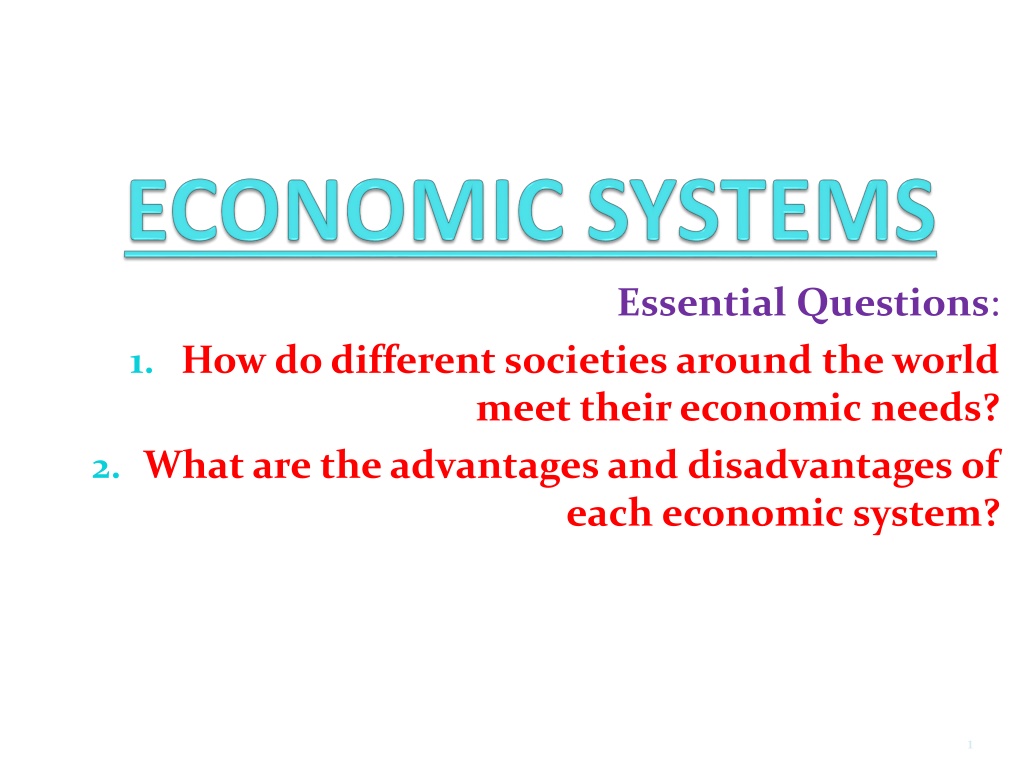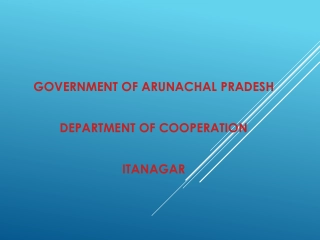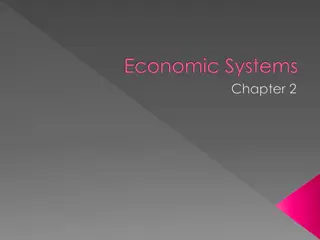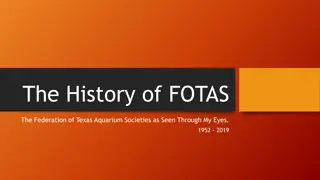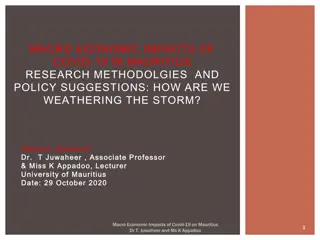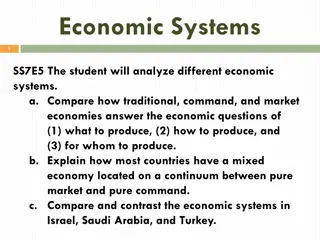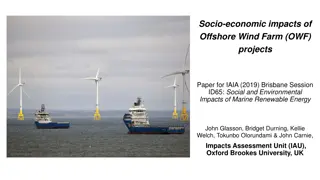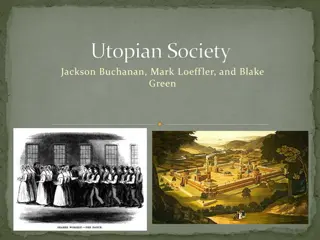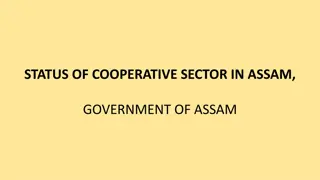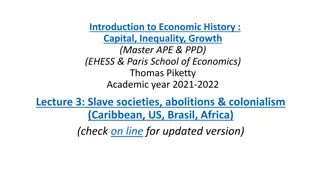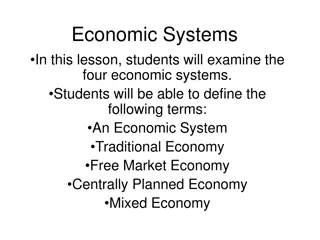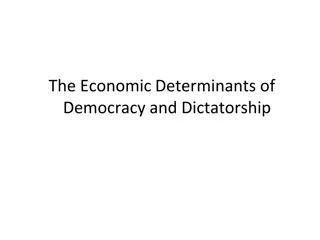Understanding Economic Systems and Their Impacts on Societies
Explore how different societies meet their economic needs through traditional, free enterprise, and communist economic systems. Learn about the advantages and disadvantages of each system, from the customs-based decisions in traditional economies to the government-controlled operations in communist economies.
Download Presentation

Please find below an Image/Link to download the presentation.
The content on the website is provided AS IS for your information and personal use only. It may not be sold, licensed, or shared on other websites without obtaining consent from the author. Download presentation by click this link. If you encounter any issues during the download, it is possible that the publisher has removed the file from their server.
E N D
Presentation Transcript
Essential Questions: 1. How do different societies around the world meet their economic needs? 2. What are the advantages and disadvantages of each economic system? 1
Economics The study of how people meet their basic needs. Problem of Scarcity Problem of Scarcity: unlimited wants with limited resources Example: Gasoline/Oil 2
Economics contd Societies must answer 3 questions What to produce How to produce For whom to produce How these questions are answered determines its economic system. Traditional Economy (Amish) Traditional Economy (Amish) Free Enterprise Free Enterprise (Market Communist Economy Communist Economy (Command Socialist Economy (Mixed) Socialist Economy (Mixed) Market) Command) 3
Traditional economy People meet their basic needs much as their ancestors did. Economic decisions are made on the basis of customs and beliefs handed down from one generation to another. 4
Traditional economy contd Production Methods Subsistence Agriculture: Farmers grow just enough to feed themselves and their families. Cottage Industries: Goods like textiles are produced in private homes by hand, usually by the entire family. 5
Free Enterprise economy People freely produce and buy what they want. 3 questions are answered by the interplay between consumers and producers. Prices are set by the interaction of supply/demand. 6
Free Enterprise economy contd Producers invest their money in order to make a profit. There is little government interference. Inefficient producers are eliminated by going out of business. Also called a market economy. Examples: United States, Japan, Hong Kong, China (communist political system) working on creating Free Enterprise economy 7
Communist Communist economy economy Government sets economic goals to be met. Workers labor together and are supposed to share equally in the fruits of their labor. Private property ownership is abolished. The government owns/operates all businesses 8
Communisteconomy contd Developed by Karl Marx in the 1800s. Also called a command economy. Examples: Former Soviet Union (1917-1991) Cuba North Korea 9
SOCIALIST SOCIALIST economy Government owns some basic industries. Private ownership of smaller businesses is allowed. Government provides low-cost or free public services: schools, health care, etc. economy 10
SOCIALISTeconomy contd Also called a mixed economy. Examples: Sweden and Israel. India- Socialist 1947-1991,working towards free enterprise Western European countries: France, Germany, UK 11
Review In Indonesia, the government owns large industries and sets some prices. However, private businesses are also encouraged and several hundred are actively traded on the Indonesian Stock Exchange. This country s economy system can be best be classified as- A. Traditional B. Free Enterprise C. Socialist D. Communist ANSWER: C 13
Reviewcontd In which economic system would you expect the widest selection of consumer goods? A. Traditional B. Free Enterprise C. Socialist D. Communist ANSWER: B 14
Reviewcontd An essential characteristic of a communist economy is the- A. Interaction of supply and demand B. Organization of worker unions C. Privatization of business D. Government ownership of property ANSWER: D 15
stop 16
review 17
